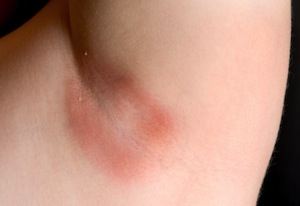9 Symptoms of a Yeast Infection |  |
| 9 Symptoms of a Yeast Infection Posted: 28 Oct 2013 10:22 AM PDT  Yeast infections are not a problem that only affect women or the vagina. The fact is that yeast infections can affect many parts of the body of both men and women of all ages. Yeast infections can cause pain, swelling and unpleasant discharge. When they infiltrate the mouth, they can make the mouth feel cottony and impair the sense of taste. When a yeast infection strikes the skin it can cause it to crack, swell, or bleed. Perhaps most surprising, according to new research, yeast infections may be related to IBD and neurological dysfunction.
What Cause a Yeast Infection?The most common sources of yeast infections are from Candida albicans, although Candida krusei, Candida glabrata, and Candida parapsilosis are also high on the list. [1] Candida is a fungus that occurs naturally on the body. It’s present on everybody’s body, that is normal. However, Candida must be adequately balanced. If a Candida imbalance occurs, then dark, moist areas — especially the mouth and any region in which skin folds — may be subject to an overgrowth as a result of systemic imbalance or inadequate cleanliness. An even more serious problem, known as invasive Candidiasis, may occur when the fungus enters the blood stream. this type of infection can quickly become a serious problem. Additionally, some people may be at higher risk for yeast infections. For instance, persons with psoriasis and eczema as likely to suffer from oral Candida infections. [2] Identifying a Yeast InfectionIt’s important to identify a yeast infection early. Remember a yeast overgrowth literally means that yeast is reproducing on your body. The longer you wait the higher the count may be! Ignoring the problem can cause a simple overgrowth to become a serious issue. A yeast infection is like a noisy houseguest — it typically lets its presence be known. Experiencing any of the following? You may have a yeast infection… 1. DischargeThe creamy, cottage cheese-like discharge common with yeast infections comes from lesions. In the mouth they can occur on the tongue, tonsils, roof of the mouth or inner cheeks. The tongue may appear white. On the skin, lesions appear as small blisters around the infected area. The discharge from lesions of a vaginal yeast infection can be watery and white to thick and chunky. 2. RednessOn the skin, a yeast infection presents as reddish or purplish spots, similar to eczema or psoriasis. The vulva of an infected woman may be more red than normal and be much more sensitive. 3. ItchingFrequent, and potentially painful irritation naturally occurs as a result of infected skin and tissue of the vagina, vulva, or even penis (primarily in uncircumcised men). This can create a burning sensation and the urge to itch. Avoid scratching as it will only make the infection worse. Ozonated olive oil may provide cooling relief. 4. Cracking SkinThe skin around the mouth, or localized around the dermal infection may crack and bleed. While this indication means that the body is fighting the yeast infection, the cracking and bleeding presents a potential location for further infection. Keep it clean and use a soothing balm that encourages wound healing. 5. SwellingThe infected area will likely swell as the body fights off the Candida fungus. Swelling can occur in the mouth, sex organs, and skin, as well as in the intestines if a Candida infection occurs internally. Swelling usually accompanies tenderness… 6. DiscomfortWhen far enough advanced, Candidiasis can result in constant discomfort and tenderness. This stems from the swelling, itching and burning associated with infection. A vaginal yeast infection can cause uncomfortable urination and intercourse. 7. IBD (Irritable Bowel Disease)Intestinal inflammation causes IBD. While bacterial infections have been linked as a cause, researchers have begun to understand the role of yeast, specifically Candida, in intestinal irritation. Studies have linked Candida to the development of Crohn's disease and other bowel diseases. [3] 8. FatiguePatients suffering from internal yeast infections frequently experience fatigue. In fact, individuals suffering from a Candida-related complex, or chronic candidiasis syndrome, share similar symptoms to those with chronic fatigue syndrome. The one difference is the chronic flu symptoms experienced by those with chronic fatigue. [4] 9. Mood DisordersThere is a growing body of evidence that supports the use of micronutrients to combat depression. However, nutrition is only valuable when the body can use it. If absorption is hampered, then the micronutrients will not be effective. So what’s the problem? Well, Candida has been found to inhibit intestinal absorption. It has been shown that mood disorders can be worse during periods of Candida infection. When Candida clears up, mental status may improve. [5] -Dr. Edward F. Group III, DC, ND, DACBN, DCBCN, DABFM References:
The post 9 Symptoms of a Yeast Infection appeared first on Natural Health & Organic Living Blog. |
| You are subscribed to email updates from Natural Health & Organic Living Blog To stop receiving these emails, you may unsubscribe now. | Email delivery powered by Google |
| Google Inc., 20 West Kinzie, Chicago IL USA 60610 | |
No comments:
Post a Comment